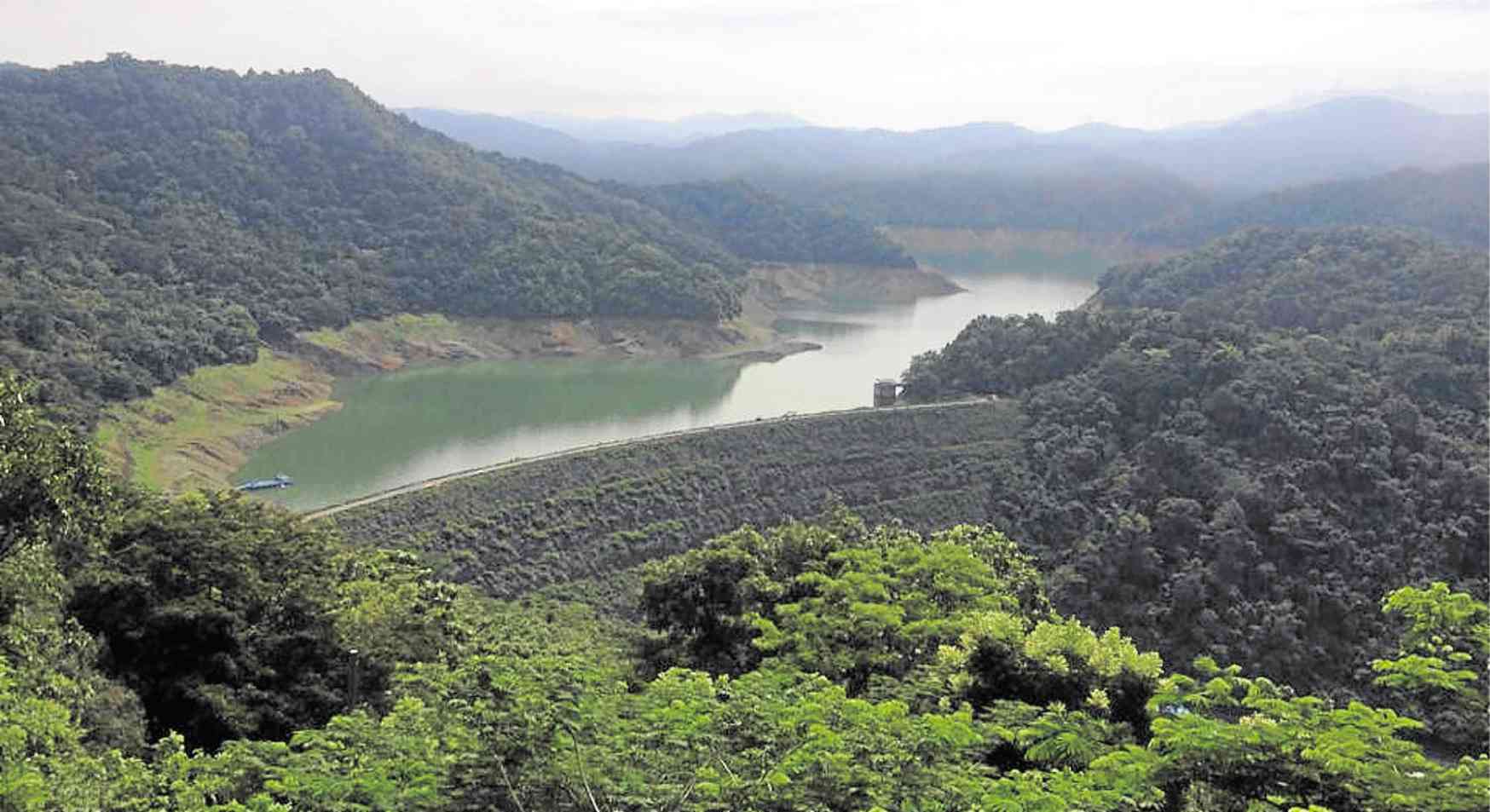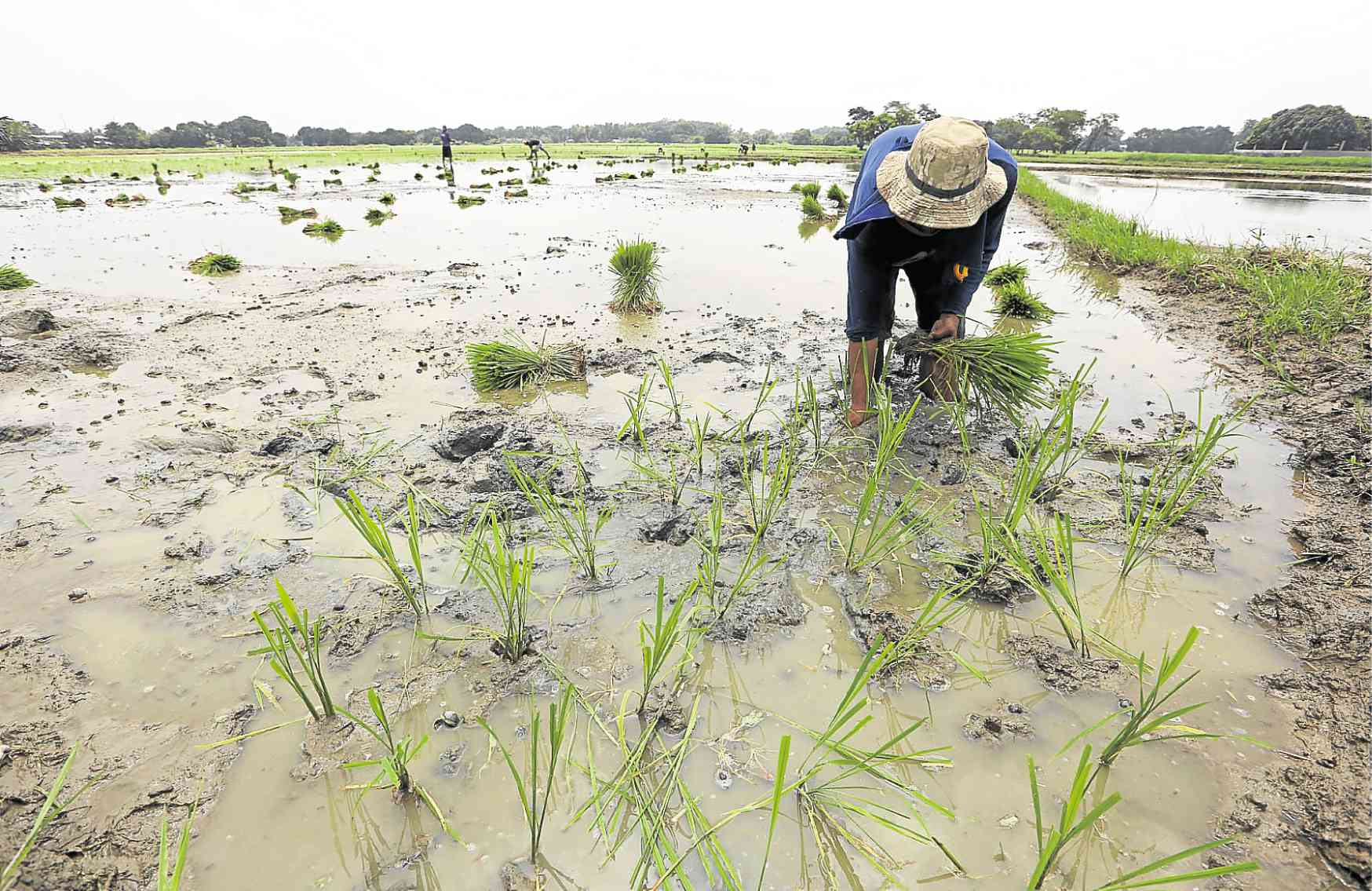Water for farms cut as Angat Dam level drops

METRO SOURCE Angat Dam in Bulacan province supplies water to households and businesses in Metro Manila and farms in Central Luzon. In this July 22, 2015 photo, reservoir level is shown to have dropped to 179.8 meters above sea level, below its high normal level of 210 masl. —CARMELA REYES-ESTROPE
CITY OF MALOLOS — The supply of irrigation water for more than 27,000 hectares of rice farms in Bulacan and Pampanga provinces has started to diminish as the water level in Angat Dam continues to drop early this dry season.
On Monday, the water level plunged to 192.52 meters above sea level, 17.48 meters lower than its high normal level of 210 masl, Felicisima Mungal, head of the Bulacan provincial disaster risk reduction management office (PDRRMO), said.
The PDRRMO has been monitoring the water level in Angat Dam and those in Ipo and Bustos dams, all in Bulacan.
Metro consumers
Due to the drop, the regular 40 cubic meters per second volume of water being released for irrigation were cut to 35 cubic meters per second, said Felix Robles, National Irrigation Administration (NIA) director in Bulacan.
Article continues after this advertisementBut he said the reduced volume remained sufficient for irrigating farms. More than 20,000 farmers in Bulacan and Pampanga are dependent on the irrigation water from Angat Dam.
Article continues after this advertisementThe National Water Resources Board (NWRB) is scheduled to completely cut the supply of irrigation water from the dam by May 16, to allow the full use of its water for Metro Manila consumers.

REDUCED SHARE Farmers in Bulacan province are assured of irrigation water supply from Angat Dam until May, although allocation has been reduced due to the dry spell. —NIÑO JESUS ORBETA
Priority supply
“The diminishing supply for irrigation is a regular process to give way for the need of Metro Manila, which is the priority supply of Angat Dam,” Robles said. The dam supplies 97 percent of Metro Manila’s water requirements.
NWRB Executive Director Sevillo David Jr. said the cut would not affect the irrigation needs of farmers since they had already been harvesting their crops.
In previous years, the NWRB had been cutting the allocation of irrigation water during the first or second week of April when the water level in Angat Dam started to drop, Robles said.
“Come August and September, the dam can again start releasing irrigation water,” he said.
Robles said Angat Dam is allowed to carry its maximum capacity of 212 masl every end of the year to irrigate farms during the dry season the following year.
Cordillera rains
In Cordillera, the unexpected downpour in most parts of the region since Monday may have helped save crops that suffered from an early dry spell, the Department of Agriculture (DA) said.
“The rains were strong [in Apayao and other provinces on Monday]. We hope the rains could be sustained for a few days more,” Cameron Odsey, DA director in Cordillera, said on Tuesday.
Cordillera crop losses had been pegged at P1.1 billion, with damage affecting 8,000 ha of farms, most of them planted to corn. The drought partially damaged 11,000 ha of farms in Apayao, Kalinga and Ifugao provinces.
In Cagayan Valley, the drought damaged P1.4 billion worth of crops in 66,963 ha while palay worth P702 million was destroyed in 48,394 ha.
Cagayan province was hardest hit with 35,054 ha of farms damaged, followed by Isabela, 8,145 ha, Nueva Vizcaya, 2,551 ha, and Quirino, 1,743 ha.
Last week, the Philippine Air Force placed one of its planes on standby to conduct cloud-seeding operations, said Narciso Edillo, DA director in Cagayan Valley. —Reports from Carmela Reyes-Estrope, Vincent Cabreza and Villamor Visaya Jr.